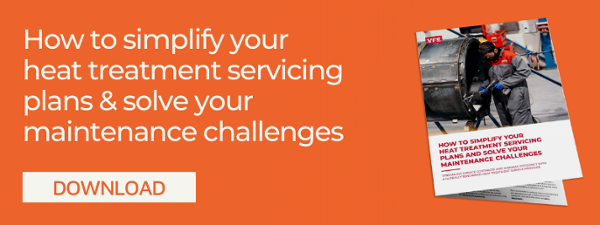Across sectors, manufacturers can reduce production costs and improve their businesses by implementing routine calibrations throughout their operations.
All new process equipment has to be calibrated before it can be used to ensure a site’s operations meet internal quality and technical requirements, as well as external ones like Nadcap AMS2750/AMS2769.
But if equipment is to continue meeting these standards, calibration must be carried out routinely. While this might seem like an additional cost, at a time when many manufacturers are reviewing their overheads and streamlining suppliers, routine calibration can actually reduce production costs and save businesses money in the long-term.
How does it achieve this and what steps can you take to ensure calibrations are carried out routinely across your operations?
Improved process equipment reliability
The quality of parts produced hinges on a site’s advanced manufacturing equipment working to specification.
A routine calibration schedule facilitates this by ensuring equipment is calibrated correctly and compliantly at regular intervals, improving machine reliability. More reliable equipment reduces operational costs by minimising loss of production and loss of product due to non-compliance.
|
“Customers investing in routine calibrations can be confident that their equipment is operating at the required outputs that they expect, which is going to ensure a more reliable product.” Slater Jinkinson, head of sales, VFE |
Increased energy efficiency
Equipment that is operating outside of compliance can lead to energy inefficiencies. On its own, the additional costs incurred by one machine will be negligible, but sites that calibrate their equipment infrequently will not have visibility over how many machines are operating at reduced energy efficiency or how long they have been underperforming. As well as impacting sustainability, this could lead to significant energy costs if left unaddressed.
A routine calibration schedule solves this by ensuring processing equipment is operating energy efficiently, minimising energy wastage and reducing production costs.
Learn more about reducing your vacuum furnace’s energy consumption.
|
Did you know… VFE also offers dedicated energy-saving systems, designed to Automate the shutdown and restart of all your vacuum furnaces. |
Higher productivity
Routine calibration is one of the leading ways that site managers can drive up productivity across their site. Sites with continuous improvement initiatives can sometimes overlook the critical role that machine health plays on processing times or uptime, for example.
Calibrations delivered as part of a planned preventative maintenance programme effectively optimise machines for operation, ensuring that they are running to specification and giving site managers the confidence that their equipment is operating at the required outputs.
Unlock greater equipment utilisation
Process equipment is a sizable investment for any site, so it pays to get the most value back from it. To help you get more out of your atmosphere ovens and furnaces, our services and calibrations will ensure your machines are running at maximum efficiency, meaning they can process more materials at optimum speeds for a great return on your operational investment.
|
If equipment fails to meet calibration requirements or is not running properly, VFE engineers can quickly make adjustments or conduct repairs, saving additional call-out costs. |
Implementing a routine calibration process
In the current environment, manufacturers around the world are scrutinising performance metrics in an attempt to improve efficiency, reduce expenditure and remain profitable. Routine calibrations, with adjustment (and re-calibration) as necessary, are an integral step towards improving performance metrics, reducing waste and driving up profitability.
But an increase in calibration frequency puts additional pressure on engineering teams, which can lead to shortcuts being taken and some of the benefits of calibrations being missed. In worst-case scenarios, the integrity of the calibration could be at risk.
When this pressure builds, it can make sense — both financially and procedurally — to approach a UKAS accredited (UKAS Accredited Calibration Laboratory No.4338) calibration provider like Vacuum Furnace Engineering (VFE) for external support.
UKAS accredited calibrations (UKAS Accredited Calibration Laboratory No.4338) form an integral part of VFE’s routine ServiceCare contracts, reassuring our customers that their calibrations are being carried out by experienced technicians, to the highest regulatory standards. On top of these benefits, the UKAS certification guarantees businesses that the UKAS calibrations being delivered meet ISO 17021 standard for conformity assessment.
“VFE provides a professional, reliable, friendly and price-competitive service whilst maintaining very good measurement uncertainties.”
Working with a reputable, impartial service provider improves the quality and transparency of your operations, in turn boosting the standard of your output but also your reputation as consumer trust and confidence in the quality of your products and services grows.
